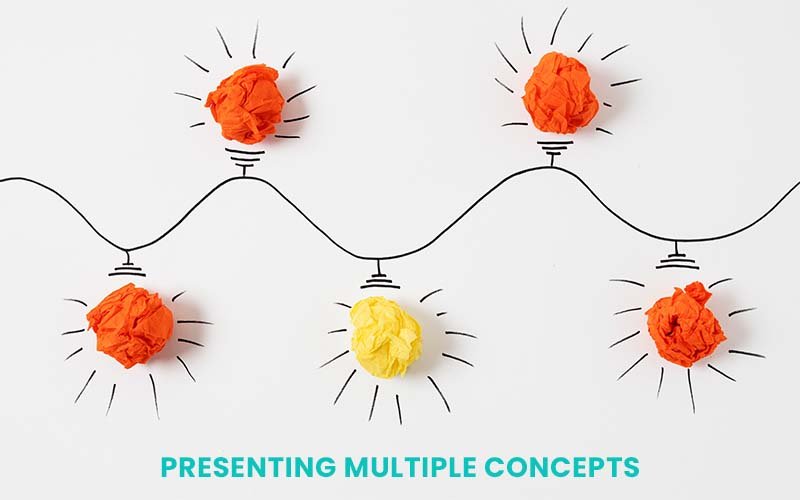

Graphic design agencies play a pivotal role in creating visually captivating designs that effectively communicate their clients' messages.
However, finding the delicate balance between creativity and client requirements can be a challenging task. While designers strive to explore innovative ideas, clients often have specific objectives and expectations. Achieving harmony between these two elements is essential for the success of graphic design projects.
In this blog, we will explore strategies that graphic designing agencies employ to effectively balance creativity and client requirements in their projects.
Understanding the client's vision is the foundation for achieving a successful balance between creativity and client requirements in design projects. It is through a comprehensive understanding of the client's goals, target audience, and brand identity that a designer and graphic designing agency can effectively create designs that resonate with the client's vision.
To begin, graphic design agencies should engage in thorough discussions and consultations with the client. These conversations should delve into the client's overarching objectives for the project.
Maintaining a delicate balance between creativity and client requirements requires comprehensive research. Designers must become familiar with the client's industry, competitors, and target market. Staying updated with the latest design trends and studying successful campaigns provides inspiration for creative ideas. Thorough research enables designers to infuse creativity into their designs while ensuring they remain relevant and effective for the client.
By leveraging industry knowledge and current trends, designers can create designs that not only meet the client's requirements but also push creative boundaries.
A collaborative design process is essential in balancing creativity and client requirements. Involving clients at various project stages allows designers to gather valuable feedback and input. Open communication and a comfortable environment encourage the contribution of ideas and expertise from both parties.
This collaborative approach ensures the final design reflects the client's vision while incorporating the designer's creativity. By working together, designers and clients can create visually appealing designs that align with the client's objectives.
Effective communication and clear expectations are essential to prevent misunderstandings in graphic design projects. It is important to establish realistic timelines, deliverables, and project scope from the beginning. Clearly defining the boundaries of creativity and communicating any limitations or constraints to the client helps manage their expectations. This transparency fosters a harmonious relationship throughout the project by ensuring both parties are on the same page regarding project objectives and creative possibilities.
In order to find a harmonious balance between creativity and client requirements, it is important to present clients with multiple design concepts. By offering a diverse range of options that showcase different creative approaches and cater to their specific needs, clients have the opportunity to choose a design direction that aligns with their preferences. This approach allows clients to not only appreciate the designer's creativity and expertise but also actively participate in the decision-making process. By considering various design concepts, clients can make informed choices that result in a final design that effectively communicates their message and captures their vision.

Effectively incorporating client feedback is crucial in achieving the desired balance in projects of graphic design agencies. Actively listen to their input and gain a deep understanding of their perspective. Thoughtfully evaluate the feedback, identifying suggestions that align with the project's objectives. Incorporate those suggestions into the design while leveraging your creative expertise.
Communicate your design choices effectively, using your communication skills to educate the client on the rationale behind certain decisions. By incorporating feedback in a thoughtful manner, you can create designs that meet the client's requirements while showcasing your design expertise.
Following an iterative design process is often necessary to balance creativity and client requirements. Foster a collaborative feedback loop with the client, encouraging revisions and refinements throughout the project.
This iterative approach ensures that both parties have the opportunity to refine and enhance the design until it meets the client's requirements while preserving creative integrity. By embracing an iterative design process, designers can continuously improve and align the design with the client's vision, resulting in a final product that satisfies both parties.
As designers, it is our duty to educate clients on design principles and best practices, especially when clients have limited knowledge in this area. By explaining the significance of certain design decisions and their impact on brand perception and audience engagement, we can guide clients towards effective solutions.
Educating clients empowers them to make informed decisions that align with their objectives and ultimately improve the overall quality of the project. By sharing our expertise, we foster a collaborative partnership that leads to successful design outcomes.
Finding the right balance between creativity and client requirements is a delicate yet essential task for a graphic designing agency. By understanding the client's vision, conducting thorough research and communicating the idea, agencies can create exceptional designs that not only reflect the client's objectives but also make them creatively charged.